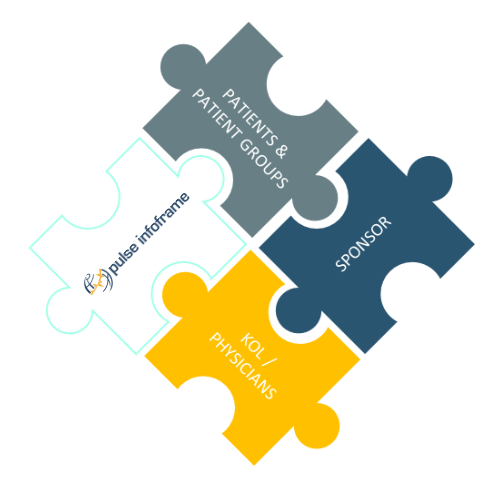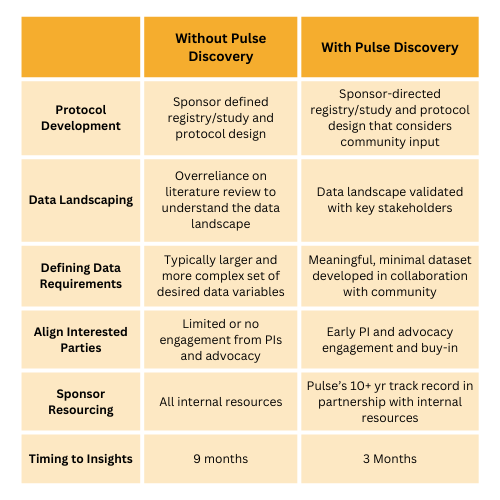De-risk your real-world evidence-generation initiatives with Pulse Discovery

Overview
Pulse Infoframe has pioneered a methodology, known as Pulse Discovery, for engaging key partners and collaborators in primary research. This proven approach assists pharmaceutical companies in addressing fundamental questions crucial to any real-world data initiative at its inception:
- How to secure early buy-in from PI and advocacy collaborators?
- Does the data we need already exist in registries or academic centers?
- What gaps in existing data do we need to fill to answer the questions we have?
- How do we reduce upfront expenses on real-world research through a phased approach?
- What level of investment might be required to ingest or generate that data?
- Would a retrospective and/or prospective approach work best?
- Should we consider site-based, patient-facing, or hybrid models?
Why Pulse Discovery?
To secure the longevity of your registries or study goals, we employ a tried-and-tested method to evaluate the feasibility of your study design, pinpoint associated risks, and develop a thorough plan to ensure the success of your real-world initiatives.

Outcomes
Through Pulse Discovery, sponsors have leveraged our 10+ year track record to gain rich real-world insight in just 3 months:
 Directional Insight
Directional Insight
Directional insights in specific conditions of interest (including adjacent and secondary conditions)
 Assess Feasibility
Assess Feasibility
Feasibility assessment for future real-world research, including approaches to consider and risk mitigation strategies
 Party Alignment
Party Alignment
Insight into the mindset of leading of PIs and advocacy groups in diseases of interest
 Identify Data Gaps
Identify Data Gaps
Clarity on the data landscape and the variables that would fill critical gaps


